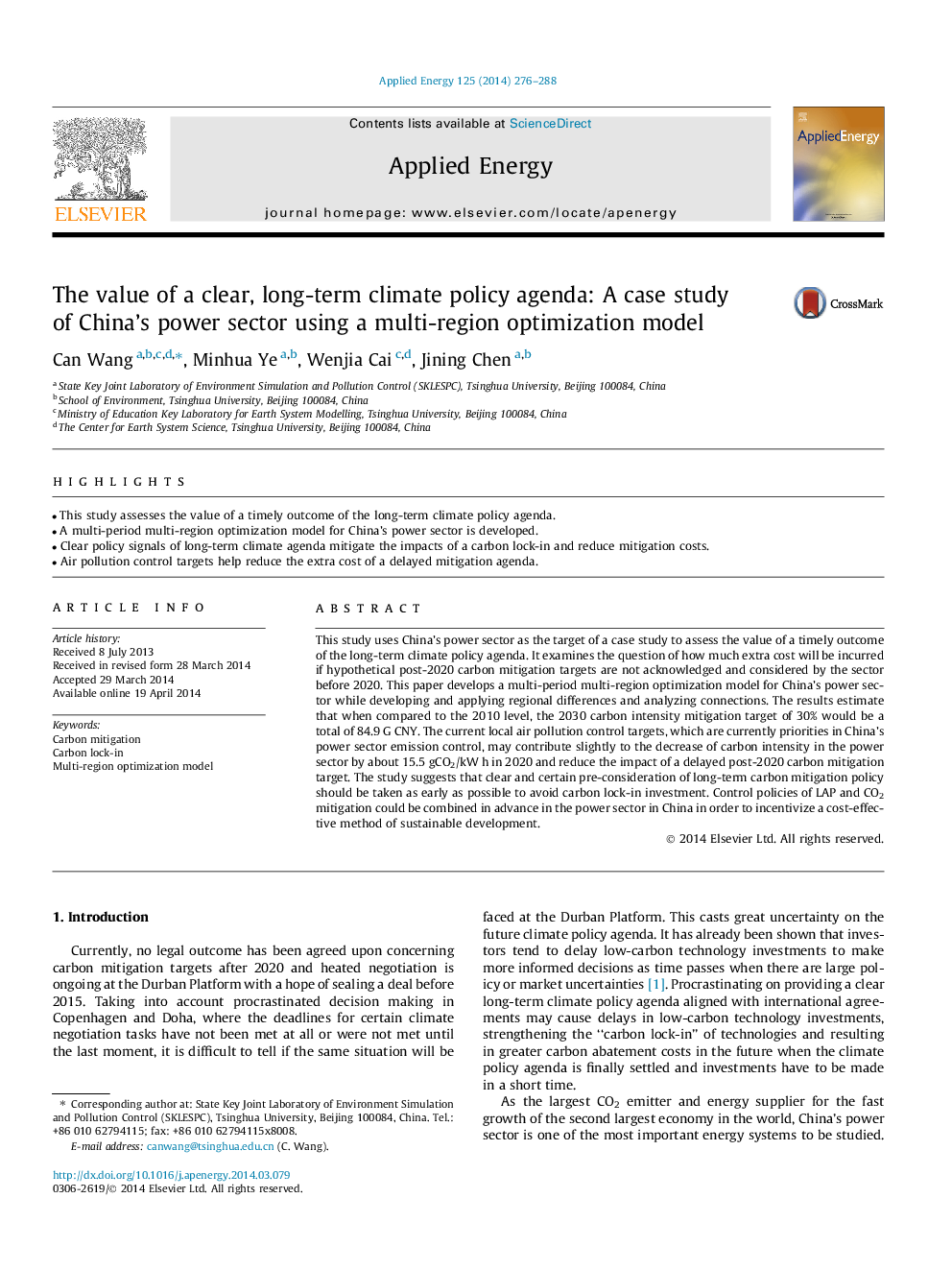| Article ID | Journal | Published Year | Pages | File Type |
|---|---|---|---|---|
| 6690325 | Applied Energy | 2014 | 13 Pages |
Abstract
This study uses China's power sector as the target of a case study to assess the value of a timely outcome of the long-term climate policy agenda. It examines the question of how much extra cost will be incurred if hypothetical post-2020 carbon mitigation targets are not acknowledged and considered by the sector before 2020. This paper develops a multi-period multi-region optimization model for China's power sector while developing and applying regional differences and analyzing connections. The results estimate that when compared to the 2010 level, the 2030 carbon intensity mitigation target of 30% would be a total of 84.9Â GÂ CNY. The current local air pollution control targets, which are currently priorities in China's power sector emission control, may contribute slightly to the decrease of carbon intensity in the power sector by about 15.5Â gCO2/kWÂ h in 2020 and reduce the impact of a delayed post-2020 carbon mitigation target. The study suggests that clear and certain pre-consideration of long-term carbon mitigation policy should be taken as early as possible to avoid carbon lock-in investment. Control policies of LAP and CO2 mitigation could be combined in advance in the power sector in China in order to incentivize a cost-effective method of sustainable development.
Keywords
Related Topics
Physical Sciences and Engineering
Energy
Energy Engineering and Power Technology
Authors
Can Wang, Minhua Ye, Wenjia Cai, Jining Chen,
